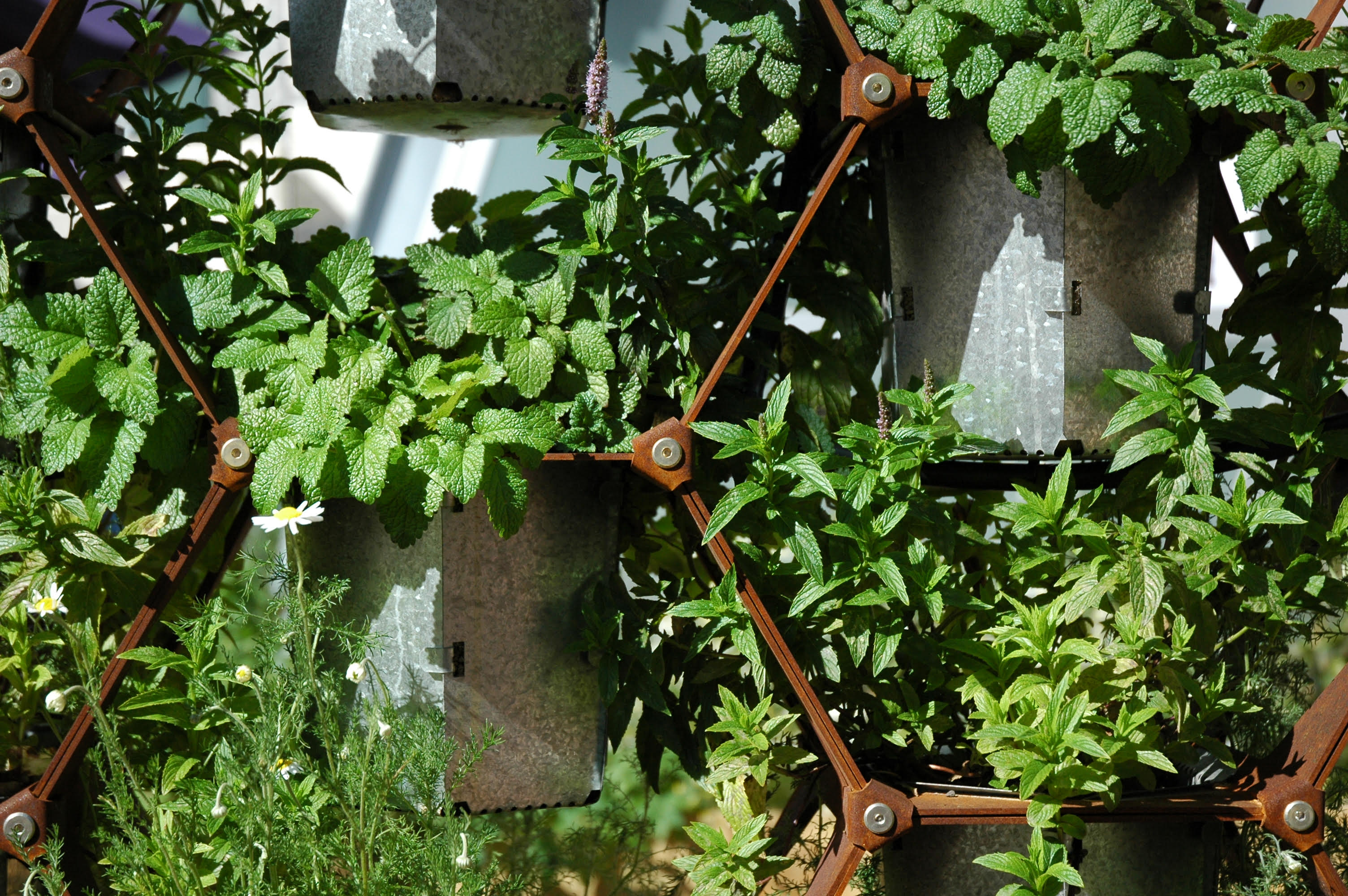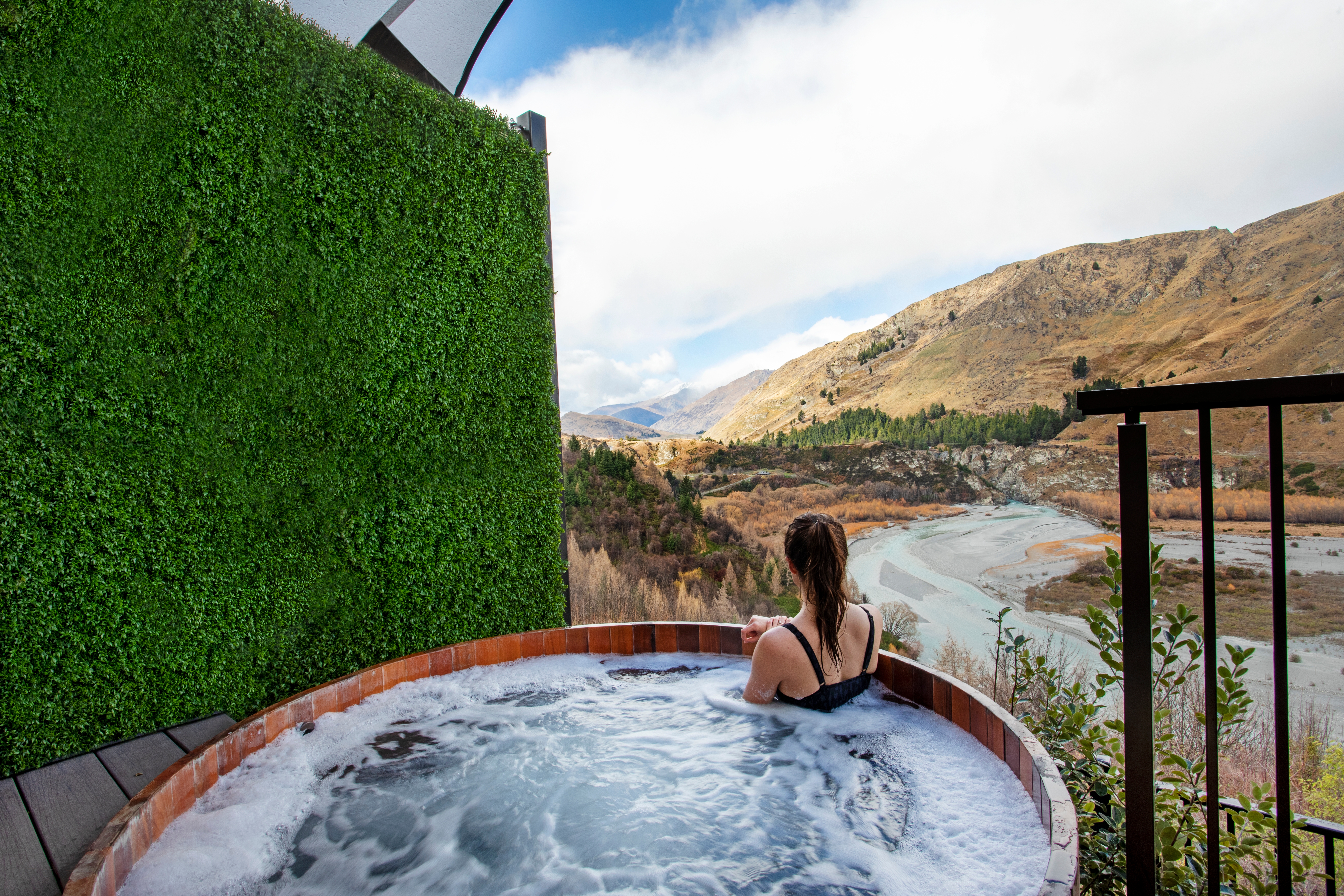Feature article
Green wall ideas for homes in Aotearoa
Here’s a few things to consider when it comes to designing eye-catching green walls.
Last updated: 21 February 2024
Whether it’s a vast exterior green wall, an interior living wall, or a freestanding vertical garden for an apartment balcony, there’s always a way to bring nature into our homes.
How to design green or living walls for apartments and balconies
Modern green wall systems are relatively simple to install and maintain and allow you to bring nature into small spaces – from courtyards to apartment balconies — although check your body corporate rules first if you live in an apartment as some do not allow structures of any kind to be secured to external walls. If this is the case, there are a number of free-standing living wall systems available.
If you are going to be securing your vertical garden, the wall surface will determine the best green wall anchor to use. For example, if attaching your living wall to a plasterboard, timber, or metal wall or fence, then the appropriate screws for each material type will be sufficient. If your wall structure is stone or concrete, then nylon nail plugs work best. For wire, mesh or lattice-style fencing, UV-resistant cable ties will suffice.
The best plants for small vertical gardens vary depending on light, wind, and specific environmental conditions. Plant choices will also be based on the type of living wall. For example, the HONEYCOMB vertical garden by Pollen is suited to a wide variety of plants, including flowering plants, herbs, succulents, and grasses.
Cover image: This modular green wall system by Pollen is known as HONEYCOMB. It is a freestanding vertical garden or living wall, that can also be wall mounted if desired. As a modular system, it can be scaled to any size.
Productive walls: the best herbs for living wall designs
As well as their aesthetic benefits, green wall systems are also great for growing herbs and other edible plants. The types of plants best suited to your green wall system will depend on local conditions. However, as a general rule, herbs such as basil, chives, coriander, dill, mint, oregano, parsley, rosemary, sage, and thyme, along with cherry tomatoes, lettuces, radishes, spinach, and strawberries, are all proven to grow well in green walls.
If you’re just looking to jazz up a particularly bland wall with some greenery, then the ideal plants for you can be found within the bromeliad, tillandsia, succulent, begonia, fern, euphorbia, and ‘spider plant’ species. Grasses, geraniums, lavender, and sedums are also popular plants for growing in a green wall, especially those that receive a lot of sunlight. For an indoor green wall, proven ‘house plants’ are best. Your local nursery should be able to provide you with a list of suitable plants – including everything from trailing plants to climbers.
This simple, DIY hydroponic green wall creates an edible garden for a small space.
Hydroponic green walls: what are they and when are they the best idea?
One of the disadvantages of a ‘traditional’ green wall is ensuring each of the plants receives the correct amount of water. Hydroponic green wall systems have been designed to minimise this factor, allowing different plants with different needs to grow side-by-side, while managing water usage. Hydroponic systems are also lighter-weight options, being up to 10kg lighter per square metre than traditional systems. They also require less maintenance, making them ideal for use in difficult to access areas.
If you’re more of the DIY-type, creating a simple hydroponic green wall is easier than it looks. With a bit of research and the right products, it’s an enjoyable experience and a great way to add a productive garden where space is limited.
This hot tub is surrounded by an artificial vertical green wall from Readyleaf, a customisable low-maintenance panelised system.
The low down on artificial green walls
Taking low maintenance to the next level, consider an artificial green wall system. These panelised systems can be ‘mixed and matched’ and are particularly suited to low natural light situations where live plants would fail to flourish. Typically made from polyethylene-polypropylene plastics, some artificial green walls also include fabrics and metal inserts designed to allow for ‘posing’ of the plants.
Artificial ‘readymade’ green walls are available in countless styles, from highly realistic hedge tiles to different styles of flowering plants. Readyleaf offers a large range of different varieties such as Phebalium, Conifer, Bougainvillea, and Hebe.
The world of green wall systems is always evolving, with new innovations coming on stream all the time. So, whether you’re a certified ‘green thumb’ or have no luck growing plants at all, there is a green wall system designed for you.
Author
Other articles you might like



